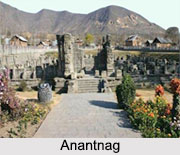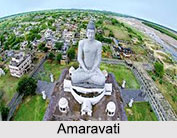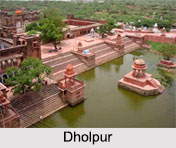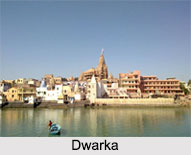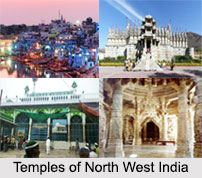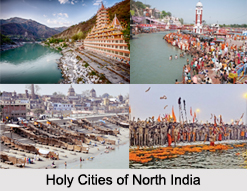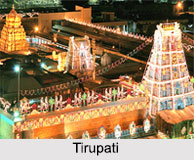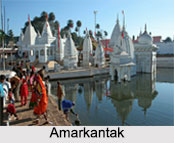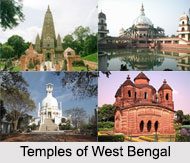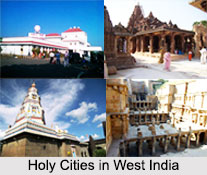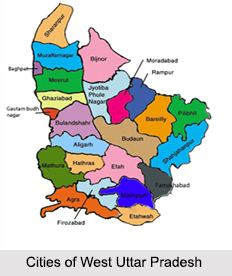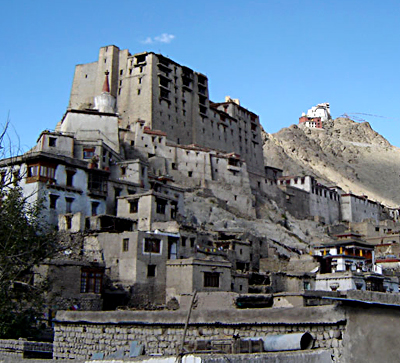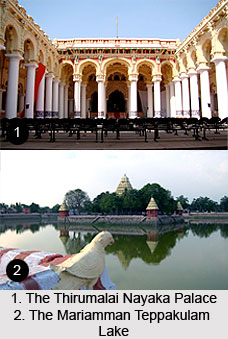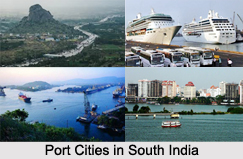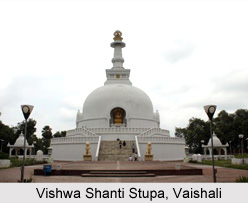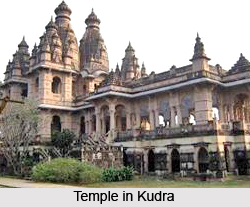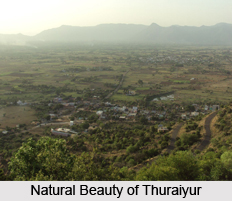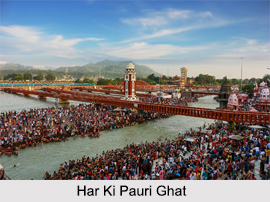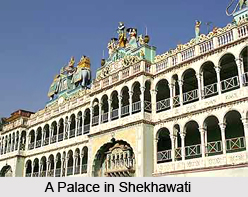 It is one of the popular tourist destinations. Within the region there are several places that are worth a visit. The history of Shekhawati region is steeped in legends. In the late 14th century, Mokal Singh, a ruler of a small principality was blessed by a Fakir by the name of Sheikh Burhan and a boy was born to the childless ruler. In honor of the Fakir he named his son Shekha. Shekhawati literally means the `garden of Shekha,` and derives the name from its founder Rao Shekha.
It is one of the popular tourist destinations. Within the region there are several places that are worth a visit. The history of Shekhawati region is steeped in legends. In the late 14th century, Mokal Singh, a ruler of a small principality was blessed by a Fakir by the name of Sheikh Burhan and a boy was born to the childless ruler. In honor of the Fakir he named his son Shekha. Shekhawati literally means the `garden of Shekha,` and derives the name from its founder Rao Shekha.
After the death of the Mughal Emperor, Aurangzeb, the empire fell. Taking advantage of this opportunity the chieftains of this region put themselves on the throne throughout the vast area around the caravan routes originating from the parts of Gujarat. As a result several small kingdoms came into existence. It is said that these small kingdoms, particularly ruled by the descendants of Sardul Singh, were flushed with money and booty, which they amassed by imposing duties on the goods being carried through their territories to the northern India from the ports of Gujarat. However it also has t6o be admitted that the taxes here were much lower when compared to amounts charged by the Rajput rulers in the other parts of Rajputana.
This move made the merchants to travel via Shekhawati, giving a sudden boost to the number of trading castes that established them in the Shekhawati Region. With the rise of the British`s East India Company these old traditional transit trade routes started dwindling because of the British ports at Bombay (Mumbai) and Calcutta (Kolkata). An increasing pressure from the British resulted in large-scale migration of the traders to the upcoming business centers around the Gangetic Plain. Towards the end of the 19th century, the power of the Rajputs waned and the business community famous as Marwaris found itself in a position of strength.
There was a complete change in the status of the middle class. This is probably the time when the bourgeoisie in Rajasthan came into power. The Rajput chieftain Thakurs of this region followed the example of the imperial rulers of the Mughal court and had their mansions frescoed. They commissioned grand portraits of themselves with horses and armory on their mansions. But the buildings to watch out for were the havelis. Most of the buildings were built between 1860 and 1900. It is due to the splendor of these buildings that the Shekhawati area is dubbed as an open-air gallery of Rajasthan.
As of today the Shekhawati region consists of the districts of Jhunjhunu and Sikar.
Accommodation in Shekhawati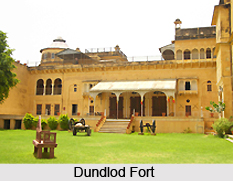 A leading tourist destination in Rajasthan is the Shekhawati region. The present region comprises of the districts of Sikar and Jhunjhunu. However in ancient India this was not the case. The Shekhawati region extended till Saraswati River. Several important districts were part of the kingdom. It was ruled by the Shekhawati Rajputs. This ancient region is famous for its havelis and frescos. People from all over the take a trip to the Shekhawati region to witness the grand monuments. The several towns and cities here are worth a visit. Each town is different in culture and heritage. In order to soak in the beauty of the place and witness the architectural marvels tourists travel to this part of the sub-continent.
A leading tourist destination in Rajasthan is the Shekhawati region. The present region comprises of the districts of Sikar and Jhunjhunu. However in ancient India this was not the case. The Shekhawati region extended till Saraswati River. Several important districts were part of the kingdom. It was ruled by the Shekhawati Rajputs. This ancient region is famous for its havelis and frescos. People from all over the take a trip to the Shekhawati region to witness the grand monuments. The several towns and cities here are worth a visit. Each town is different in culture and heritage. In order to soak in the beauty of the place and witness the architectural marvels tourists travel to this part of the sub-continent.
There are several accommodation units that offer home away from to the tourists. In most parts of the region the havelis, forts and palaces have been converted into heritage hotels. It is unnecessary to point out that the services offered at these hotels are class apart. Besides the luxury ones there are budget hotels too.
The hotels in the Shekhawati Region are:-
• Roop Niwas Kothi
• Apani Dhani
• Dera Dundlod Fort
• Mukundgarh Fort
• Hotel Castle Mandawa
• The Desert Resort
• Singhasan Haveli
• RTDC Hotel Haveli
• Narayan Niwas Castle
• Jamuna Resort
• Hotel Shiv Shekhawati
• Sangam
• The Piramal Haveu
• Surajgarh Fort
• Indra Vilas
• RTDC Hotel Chirmi
• Alsisar Mahal
Apart from the Rajasthani hospitality the services offered at these hotels are car parking, air conditioned rooms, dining, recreation and others.
